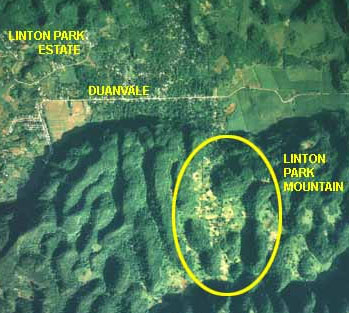Executive Summary
Restoration of degraded habitats to forest cover is recognised in the National Forest Management and Conservation Plan (2001) as an important conservation tool for managing and enhancing Jamaica's native forest resources, for improving the condition of her watersheds and for contributing to the economic livelihood of stakeholders who seek to sustainably utilize renewable natural resources. Additionally, the restoration of native forest, including restoring connectivity of isolated patches, will improve and enlarge the habitat of forest-dependent endemic flora and fauna which represent Jamaica's unique biological heritage.

The degraded areas which have proven most stubbornly resistant to restoration efforts are those which were cleared of forest, repeatedly cultivated and then abandoned to thick mats of Guinea grass, non-native fern, or huge clumps of non-native bamboo. Large tracts of such lands exist on the peripheries and within Forest Reserves. Restoration and re-integration into the forest matrix will improve the ecological health of these areas, but previous planting efforts by FD have proven costly and their sustainability is uncertain (i.e., multiple replantings have occasionally been required).
A key feature of the aforementioned degraded areas is that natural successional processes have been arrested. We believe that restoring pioneering species and successional dynamics can supersede traditional reforestation methods, which try to establish commercially valuable tree species without taking into account the many ecological benefits (e.g., nutrient recycling) that pioneering understorey species contribute to the development of later-stage woody tree species. Further, by establishing early successional microclimate conditions, we believe that succession can then be accelerated by the interplanting of mid- and late-succession species, with higher probabilities for their survival. These will be the native plant species of value to local forest product users in the community: many of these plants have already been identified by local ethno-botanical surveys. A participative process will integrate community members into the design and will use their knowledge to determine the species composition for this real-life species trial of the feasibility of creating a sustainable, native forest.
This project will start by bringing together local, national and international experts in a workshop setting to share experiences of tropical forest restoration ecology and to develop a pilot project to identify best-practices for restoration of Cockpit Country wet limestone forests. Our preliminary focus will be on evaluating the cost-effectiveness of Accelerated Natural Regeneration (ANR) in a degraded cockpit bottomland of Linton Park Mountain (LPM), which is located near the community of Duanvale in northern Cockpit Country. Workshop participants will review concepts and case studies of local and international restoration efforts to identify suitable options for LPM and to avoid costly mistakes. In anticipation of the workshop results, and based on community inputs, our own anecdotal observations and a preliminary literature review, we have identified an important pioneering species, the Trumpet Tree Cecropia peltata, to be our first target for ANR experimental research. This species also has local uses, including: use of the bark for making rope and soaking in water to cure dandruff and using dried leaves to brew a tea that cures nightcough.
This project was prepared with inputs from many stakeholders, including Forestry Department, University of the West Indies, Fairchild Tropical Botanic Garden (Florida) and community members of Windsor and Duanvale. The outline was also presented to representatives of Duanvale Citizens' Association, Duanvale (New Forest) 4H Club and the Sherwood Content Basketry Group. All persons contacted were excited by the project and share the goal, which is
While we expect this project to show positive results for our experimental restoration research within five years, we hope the LPM Restoration Demonstration Area continues to attract new researchers, local and international visitors, and others interested in environmental protection and who will support the Duanvale community in their conservation and sustainable use of Cockpit Country.
We welcome your comments or queries: